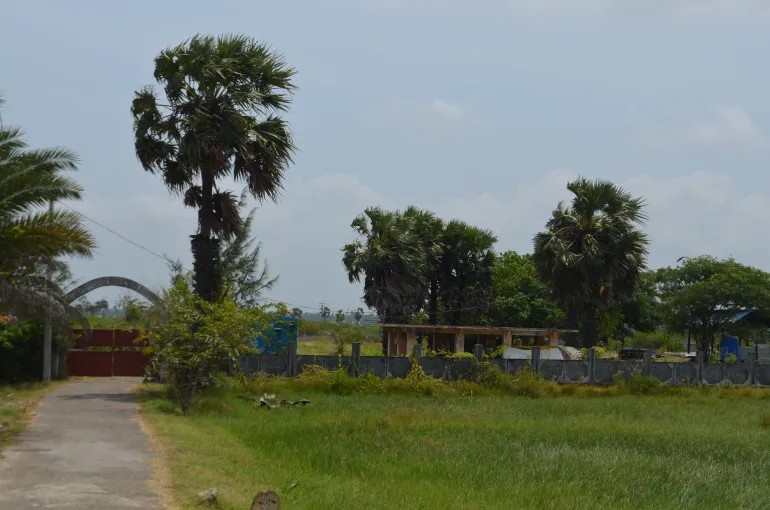News and events
Chemmani Mass Grave: 147 Remains unearthed, including Infants, as demands for international justice escalate
2025-08-06

As of 6 August 2025, the Chemmani mass grave investigation in Jaffna has uncovered a total of 147 human remains, with 140 skeletons fully exhumed under the ongoing, courtsupervised forensic process overseen by the Jaffna Magistrates Court. Among the most recent findings were the remains of children and infants, including one infant whose fragile body was carefully exhumed alongside a milk bottle, bangles, coins, and other personal items, now secured in court custody.
Excavation work is currently being carried out at two officially designated locationsForensic Excavation Site No. 01 and No. 02within the Siththupaththi Hindu Cemetery. Due to the physically demanding nature of the work, the court has approved a temporary pause in operations, with excavations set to resume on 21 August. A hearing scheduled for 14 August is expected to present reports on Ground Penetrating Radar GPR scans and soil testing, conducted by the University of Sri Jayewardenepura, which have identified additional areas of interest.
As the excavation continues, families of the disappeared, forensic experts, and the general public were invited to a courtsanctioned artefact display this week. More than 200 individuals attended the viewing of 54 recovered items, including a childs toy, babys bottle, school bags, and sandals, in an emotionally charged event held under strict legal guidelines. The court limited access to those over 21, required ID checks, and banned media coverage and photography. Lawyers representing affected families were permitted to attend.
These latest developments come as part of the second phase of exhumations at Chemmani, which was extended by 45 days by the court. Forensic teams have now worked across 29 days in this phase, gradually uncovering evidence that points to a systematic pattern of extrajudicial killings, particularly during the Sri Lankan militarys occupation of Jaffna in the 1990s.
The Chemmani site first drew international attention in 1998, when Lance Corporal Somaratne Rajapakse, then convicted in the Krishanthi Kumaraswamy rape and murder case, testified that hundreds of Tamils had been abducted, killed, and buried near the Chemmani checkpoint. Rajapakse has recently reiterated his willingness to testify before an international tribunal, claiming he acted under orders and naming senior military and police officials who were allegedly involved but never prosecuted.
On 22 July, the Criminal Investigation Department CID assumed control of the investigation from local Jaffna police, following an order by the Inspector General of Police. The transition reportedly caused friction at the site and raised alarm among civil society actors who warned of conflicts of interest and the lack of credibility of domestic investigative bodies.
International attention has steadily intensified. Australian Senators David Shoebridge and Fatima Payman raised the issue in Parliament and called for an internationally monitored investigation. They also urged the Australian government to back stronger UN action, impose sanctions under the Magnitsky framework, and support the extension of the UN Sri Lanka Accountability Project OSLAP.
The International Commission of Jurists ICJ has likewise issued a formal statement urging Sri Lanka to comply with the Minnesota Protocol and ensure full international oversight of the excavation. The ICJ emphasized that the Chemmani investigation is not merely a forensic process but a vital test of Sri Lankas commitment to truth, accountability, and justice.One of the most haunting discoveries involved the remains of an adult cradling a small child, prompting widespread anguish and further reinforcing suspicions that entire Tamil families were executed and buried during the war. Ground Penetrating Radar GPR scansinitially delayed due to Ministry of Defence clearanceare now underway, scanning surrounding areas for additional burial sites.
Tamil families, many of whom have waited for over two decades for answers, continue to voice their pain and frustration. Mothers and widows have spoken publicly of loved ones abducted by military forces, never to be seen again. Many have grown disillusioned with the Sri Lankan state and are demanding a credible international mechanism that can pursue prosecutions and provide reparations.
Despite mounting forensic evidence, no senior military officer has been held accountable. The Chemmani mass grave stands as one of the most damning symbols of the Sri Lankan states legacy of violence and impunity. Alongside other sites in Mannar, Mullaitivu, and Batticaloa, Chemmani represents not only a site of death but a powerful call for justice that continues to echo across the Tamil homeland and the international stage.
Contact Details
No: 33
Sagara Road
Bambalapitiya
Sri Lanka
Telephone: (+94) 11 250 6001
Fax: (+94) 11 250 6002



